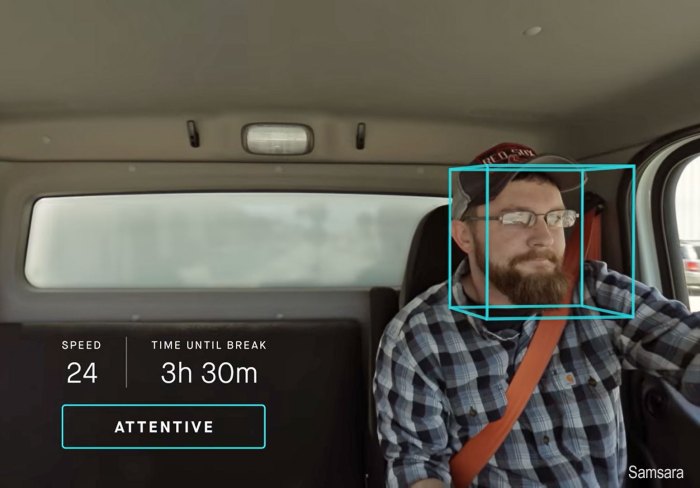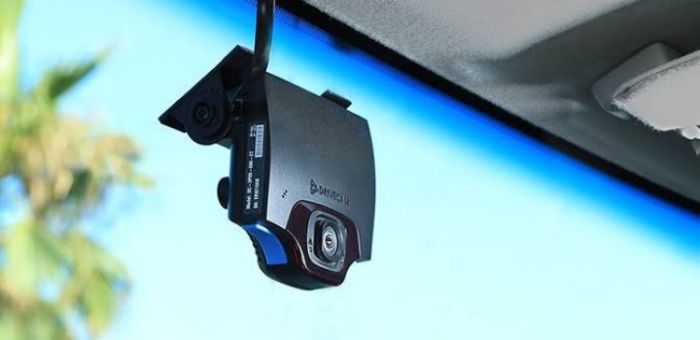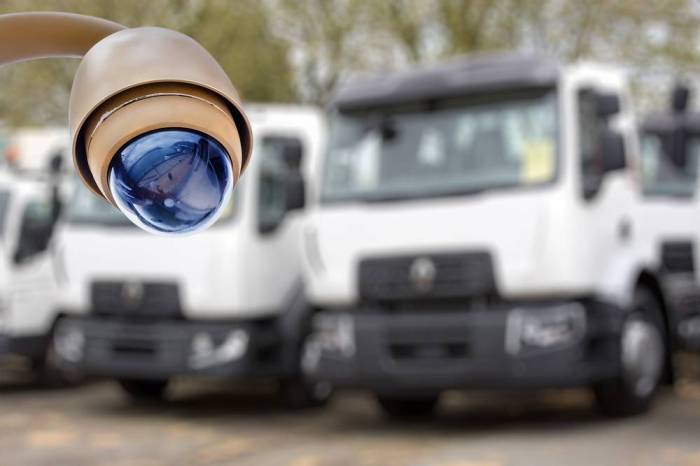Court orders trucking company to remove driver-facing cameras – In a groundbreaking move, the court has ordered a trucking company to remove driver-facing cameras, sparking a debate about safety, privacy, and the future of transportation technology. This ruling has sent shockwaves through the industry, raising important questions about the balance between ensuring driver safety and protecting their privacy.
The court’s decision stems from concerns about the potential misuse of driver-facing cameras, which have been shown to have a negative impact on driver behavior. Research indicates that drivers may engage in riskier behavior when they know they are being monitored, potentially leading to accidents.
Court Order Impact on Trucking Industry

The court order prohibiting the use of driver-facing cameras in commercial trucks has significant implications for the trucking industry. The order stems from privacy concerns and the potential for misuse of such cameras. Trucking companies must now explore alternative methods to ensure driver safety and compliance with regulations.
Legal Basis for the Court Order
- The court cited the Fourth Amendment right to privacy, which protects individuals from unreasonable searches and seizures.
- The court argued that driver-facing cameras violate this right by constantly monitoring drivers without their consent.
Potential Consequences for Trucking Companies
- Increased insurance premiums due to potential liability from camera misuse.
- Reduced driver morale and recruitment challenges due to privacy concerns.
- Need to invest in alternative safety measures, such as telematics systems or in-cab training programs.
Effects on Operations
- Trucking companies may experience delays in operations as they adjust to new safety protocols.
- Drivers may need additional training on safe driving practices without the use of driver-facing cameras.
- Companies may need to increase supervision and monitoring of drivers through other means.
Safety Implications

Potential Safety Benefits of Removing Driver-Facing Cameras
- Reduced driver distraction and fatigue by eliminating the constant monitoring of cameras.
- Increased driver trust and cooperation with employers by respecting their privacy.
- Potential for improved driver behavior as drivers are not under constant surveillance.
Impact of Driver-Facing Cameras on Driver Behavior
Research has shown that driver-facing cameras can lead to:
- Increased stress and anxiety among drivers.
- Reduced reporting of incidents and safety concerns due to fear of retaliation.
- Potential for false accusations or bias in disciplinary actions.
Alternative Methods for Ensuring Driver Safety
- Telematics systems that track vehicle data and driver behavior without constant video surveillance.
- In-cab training programs that focus on safe driving techniques and defensive driving.
- Regular driver evaluations and performance reviews to assess safety and compliance.
Privacy Concerns
Privacy Implications of Driver-Facing Cameras, Court orders trucking company to remove driver-facing cameras
- Constant monitoring of drivers without their consent, violating their right to privacy.
- Potential for misuse of camera footage for disciplinary actions or other purposes.
- Concerns about the storage and security of sensitive driver data.
Examples of Camera Misuse
- Using camera footage to unfairly discipline drivers for minor infractions.
- Sharing camera footage with third parties without driver consent.
- Using camera footage to track drivers outside of work hours.
Legal and Ethical Implications
- Violations of privacy laws and regulations, including the Fourth Amendment.
- Ethical concerns about the use of surveillance technology to monitor employees.
- Potential for discrimination or bias in the use of camera footage.
Cost Considerations

Potential Financial Impact of Removing Driver-Facing Cameras
- Costs associated with purchasing and installing alternative safety measures.
- Increased insurance premiums due to the potential for increased liability.
- Potential for lost productivity during the transition to new safety protocols.
Costs of Alternative Safety Measures
- Telematics systems: $500-$2,000 per vehicle, plus monthly subscription fees.
- In-cab training programs: $1,000-$5,000 per driver.
- Driver evaluations and performance reviews: $500-$1,000 per driver, per year.
Return on Investment
- Improved driver safety and reduced accidents can lead to lower insurance premiums.
- Increased driver morale and retention can reduce turnover costs.
- Improved public image and customer trust can enhance business reputation.
Industry Best Practices
Ensuring Driver Safety Without Driver-Facing Cameras
- Implementing comprehensive driver training programs that focus on safe driving techniques.
- Using telematics systems to track vehicle data and identify potential safety risks.
- Conducting regular driver evaluations and performance reviews to assess safety and compliance.
- Establishing clear safety policies and procedures that drivers are expected to follow.
Successful Alternative Safety Programs
- The American Trucking Association’s Safety Management Council (SMC) provides guidelines for safe driving practices.
- The National Safety Council (NSC) offers a variety of training programs and resources for driver safety.
- The Federal Motor Carrier Safety Administration (FMCSA) provides regulations and guidance on driver safety and compliance.
Role of Driver Training and Education
- Training drivers on safe driving techniques and defensive driving.
- Educating drivers on the importance of driver safety and the potential consequences of unsafe driving.
- Providing drivers with resources and support to promote safe driving practices.
Future Implications: Court Orders Trucking Company To Remove Driver-facing Cameras

Potential Long-Term Implications of the Court Order
- Similar orders in other industries where driver-facing cameras are used.
- Increased focus on alternative safety measures and driver training.
- Potential impact on the future development of transportation technology.
Possibility of Similar Orders in Other Industries
- Taxi and ride-sharing services.
- Public transportation vehicles.
- Delivery vehicles.
Impact on the Future of Transportation Technology
- Accelerated development of alternative safety technologies that do not rely on driver-facing cameras.
- Increased focus on driver privacy and data protection in the design of transportation technology.
- Potential for a shift towards more autonomous driving systems that reduce the need for constant driver monitoring.
General Inquiries
What are the legal grounds for the court order?
The court order is based on concerns about the potential misuse of driver-facing cameras and their negative impact on driver behavior.
What are the potential consequences for trucking companies?
Trucking companies may face increased costs associated with alternative safety measures and potential legal liability if accidents occur due to the removal of driver-facing cameras.
What are the alternative methods for ensuring driver safety?
Alternative methods for ensuring driver safety include driver training, telematics systems, and improved vehicle safety features.